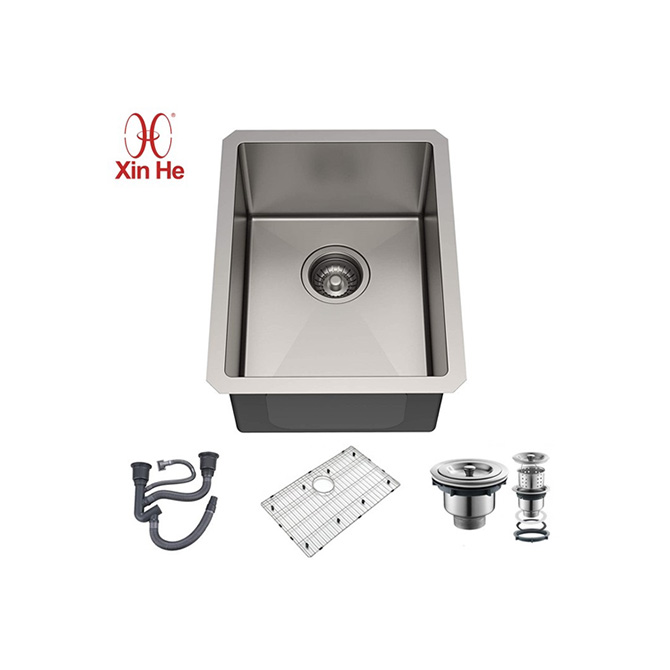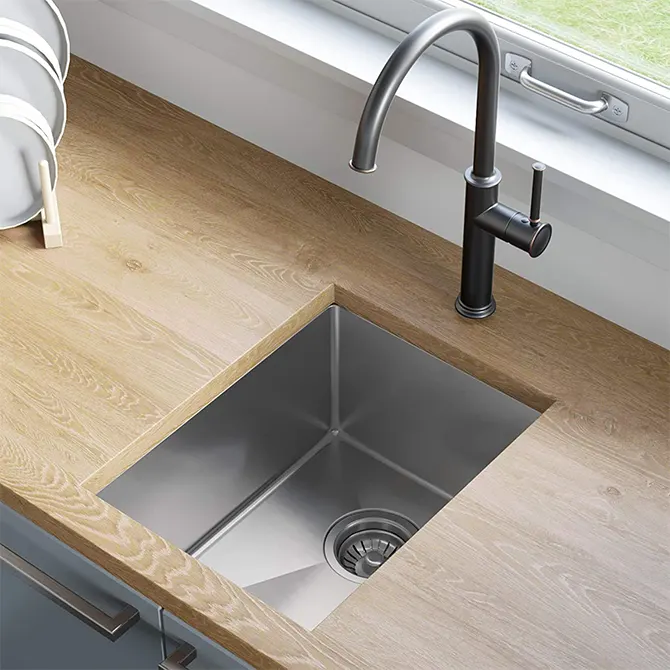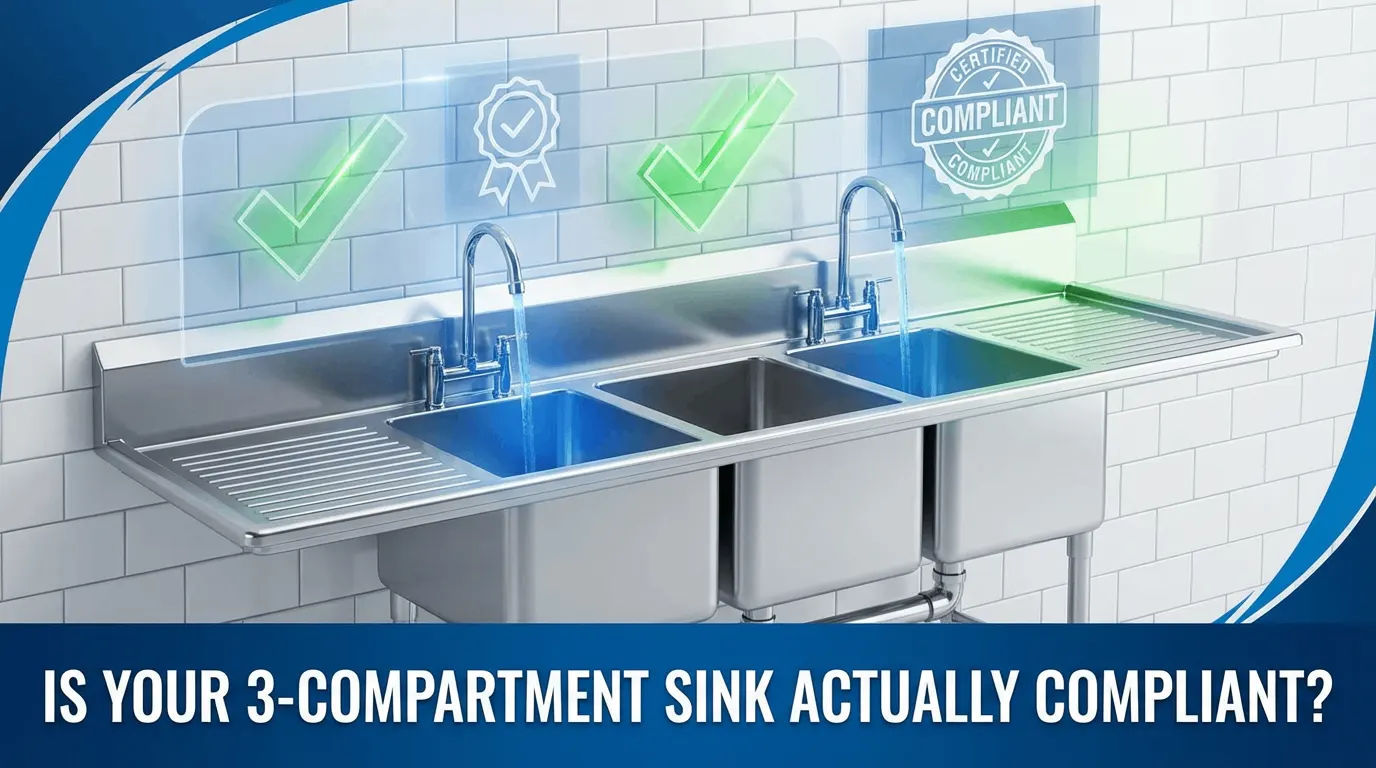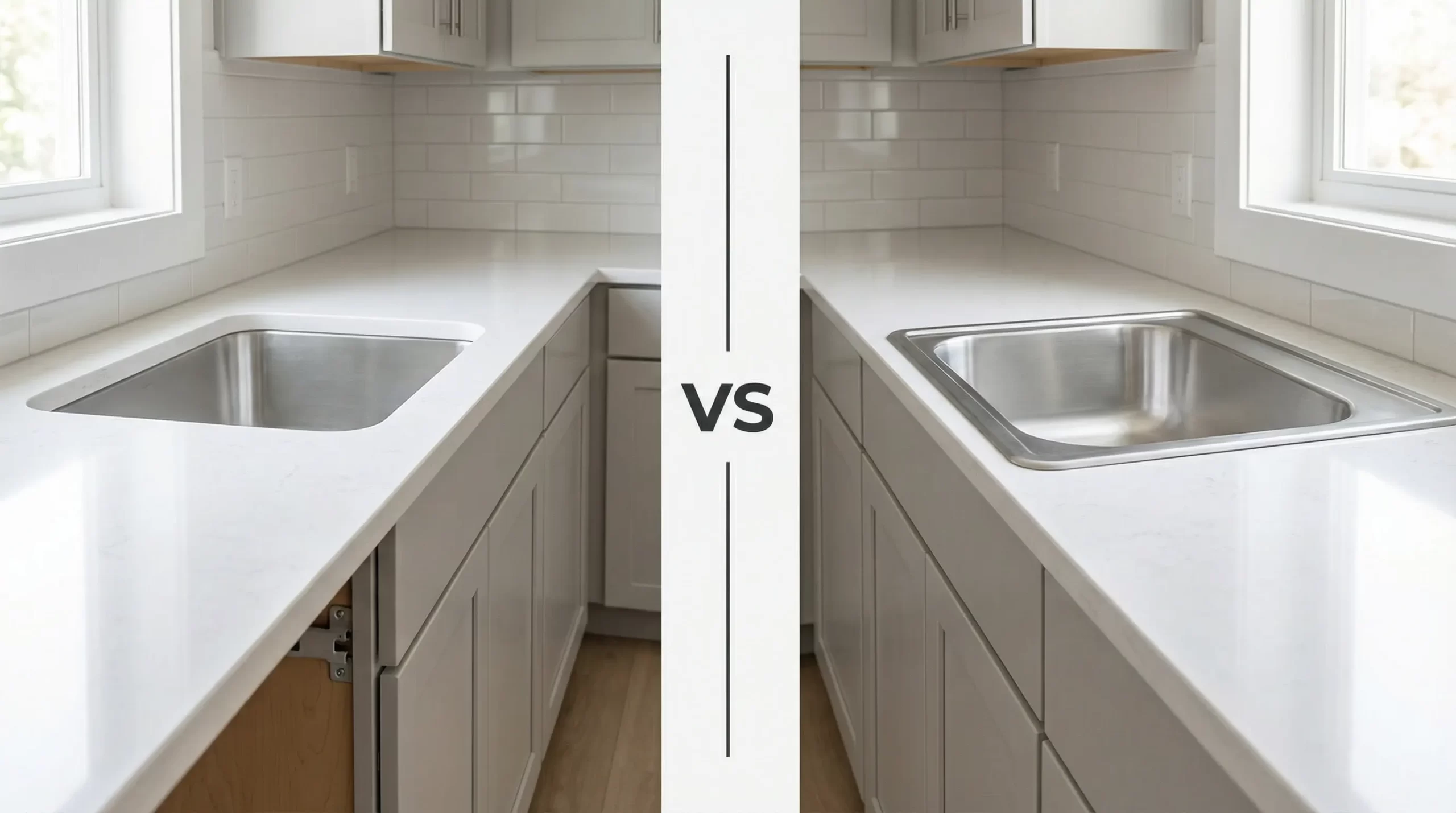How Long Does a Stainless Steel Sink Last
Stainless steel sink has become a staple in many home kitchens due to their durability, ease of cleaning, and timeless appearance. However, many users wonder how long this essential kitchen fixture can last. This article explores the key factors that influence the lifespan of a stainless steel kitchen sink and shares practical tips to extend its beauty and functionality.
Lifespan of a Stainless Steel Sink
A high-quality stainless steel sink, whether an undermount sink or a topmount sink, typically lasts 15 to 25 years with normal use and proper care. Choosing a durable material like 304 stainless steel and maintaining it well can extend its lifespan to 30 years or more.
However, the longevity of a sink depends on factors such as material quality, craftsmanship, usage habits, cleaning practices, and installation quality.
Five Key Factors Affecting Sink Lifespan
1. Material and Craftsmanship
Stainless Steel Grade
The grade of stainless steel largely determines a sink’s corrosion resistance and antibacterial property. Here’s a comparison of common types:
| Stainless Steel Grade | Key Characteristics & Advantages | Suitable Applications |
|---|---|---|
| 304 stainless steel | Contains 18% chromium and 8% nickel; strong corrosion resistance, food-grade, durable. | Ideal for kitchen sinks in homes, offering high value and suitability for daily use. |
| 316 stainless steel | Contains molybdenum, offering superior resistance to chloride corrosion; suitable for extreme environments. | Best for medical or marine settings, though costly for household kitchens. |
| 201 stainless steel | Low cost, prone to rust, poor durability. | Not recommended for long-term use in stainless steel sinks. |
Recommendation: Go for a 304 stainless steel sink. It’s a good balance of performance and cost, working well for most home kitchens.
Stainless Steel Gauge
The thickness of a sink directly impacts its durability. Thickness is measured in “gauge,” where a lower number indicates thicker material. For example:
- 16 gauge stainless steel sink: Thick and robust, resistant to dents and deformation, ideal for heavy use.
- 18 gauge stainless steel sink: Slightly thinner but still sturdy, offering good value for typical households.
- Thinner 20 or 22 gauge sink: budget-friendly but prone to denting, suitable only for temporary or low-budget use.
Tip: For longevity, prioritize 16 or 18 gauge high quality sinks.
Surface Finish
The surface finish affects both the appearance and maintenance of a sink:
- Brushed finish: Features a subtle texture that conceals minor scratches and water spots, making it easy to maintain and keeping the sink looking timeless.
- Satin finish: Similar to brushed, with a soft matte look, good scratch resistance, and easy cleaning.
- Polished finish: Offers a mirror-like shine but shows scratches, watermarks, and fingerprints more easily, requiring frequent upkeep.
Recommendation: Choose a brushed finish sink for a blend of aesthetics and ease of stainless steel care.

2. Daily Use Habits
- Handle with Care: Dropping heavy pots or sharp utensils can cause dents or deformation on a stainless steel sink, especially with a deep bowl sink. Always place items gently to avoid unnecessary impact.
- Use Protective Accessories: A sink grid or stainless steel sink protector can effectively shield the sink’s bottom from scratches and wear.
- Avoid Corrosive Substances: Prolonged exposure to strong acidic or alkaline substances, such as certain cleaners or bleach, can damage the sink’s surface and potentially cause pitting corrosion. Rinse thoroughly after use.
3. Cleaning and Maintenance
- Regular Cleaning: Wipe the sink with mild soapy water and a soft cloth for simple, effective cleaning. For a deeper clean, use a stainless steel sink cleaner or a baking soda solution weekly.
- Avoid Steel Wool: Using abrasive steel wool can scratch the sink’s surface, compromising its corrosion resistant properties and making it more prone to rust, even in a rustproof sink.
- Promptly Remove Buildup: Food residue left in the sink for too long can breed bacteria and react with the surface, causing stainless steel sink stains. In areas with hard water, hard water stains should be addressed promptly by soaking with white vinegar for 10-15 minutes before wiping clean.
- Dry the Surface: After each use, dry the sink with a soft cloth to minimize water spots on stainless steel sink and prevent mineral buildup, keeping the surface shiny.
4. Water Quality
- Hard Water Areas: Hard water contains high levels of minerals, which can lead to the formation of water stains on stainless steel sinks, potentially compromising their corrosion resistance. Regular cleaning or installing a water purifier can help reduce water stains.
- Chlorine Content: Tap water typically contains chlorine for disinfection purposes. While stainless steel offers some resistance to chlorine, prolonged exposure to high-chlorine water may cause pitting corrosion. Rinsing and drying the sink after use can effectively protect it.
5. Installation Quality
- Stability: Whether it’s an undermount sink or a drop-in sink, the sink must be securely installed to prevent movement that could cause wear over time.
- Sealing: The connection between the sink and the countertop must be tightly sealed to prevent water leakage that could damage the cabinet. Proper sink installation involves using high-quality sealants to ensure a watertight fit.

Tips to Extend Your Stainless Steel Sink’s Life
- Choose Wisely: Opt for a 304 stainless steel sink with a 16 gauge thickness for a balance of durability and hygiene.
- Use Protective Accessories: Equip your sink with a sink grid and a reliable drain assembly to shield the bottom and minimize scratches.
- Clean Smart: Regularly clean with a stainless steel sink cleaner and dry the surface to prevent water spots and hard water stains.
- Stay Proactive: Inspect for scratches or stains regularly and address them promptly to avoid bigger issues.
- Improve Water Quality: In areas with hard water, consider installing a water filter to reduce hard water stains.
FAQs
1. How do I deal scratches?
Lightly buff minor scratches along the grain using a stainless steel sink cleaner or a polishing compound like Bar Keepers Friend. For severe scratches, consult a professional.
2. How do I remove hard water stains?
Soak the sink with white vinegar for 10-15 minutes, then wipe with a soft cloth to effectively remove hard water stains and restore shine.
3. How do I pick the right sink?
Consider your kitchen size and needs. Choose a 304 stainless steel sink with a 16 gauge thickness. A single bowl sink suits smaller kitchens, while a double bowl sink is ideal for busy households.
4. Will my sink rust?
Typically rustproof, but prolonged exposure to corrosive substances or scratches may cause minor rust. Regular cleaning helps prevent this.
The lifespan of a stainless steel sink depends on factors like material quality, usage habits, maintenance, water quality, and installation. By choosing a 304 stainless steel sink, adopting good usage practices, and maintaining it regularly, your sink can remain functional and attractive for 20-30 years or even longer!
Have other questions? Contact us now!






